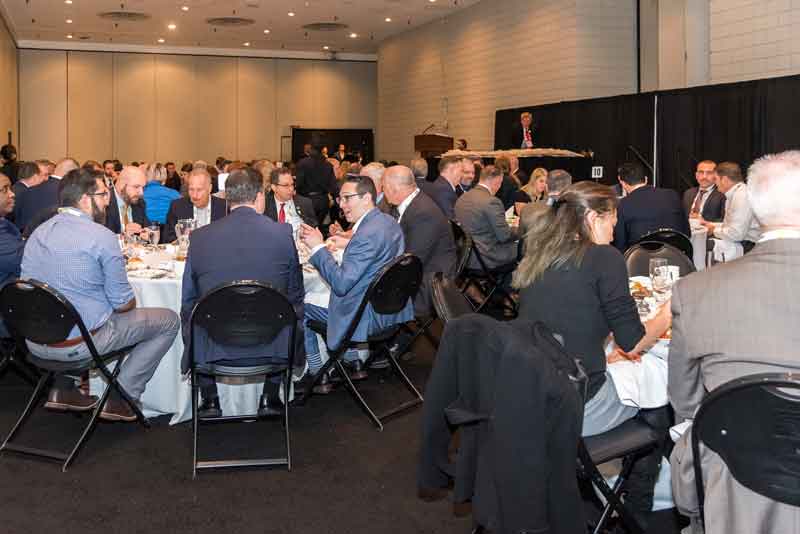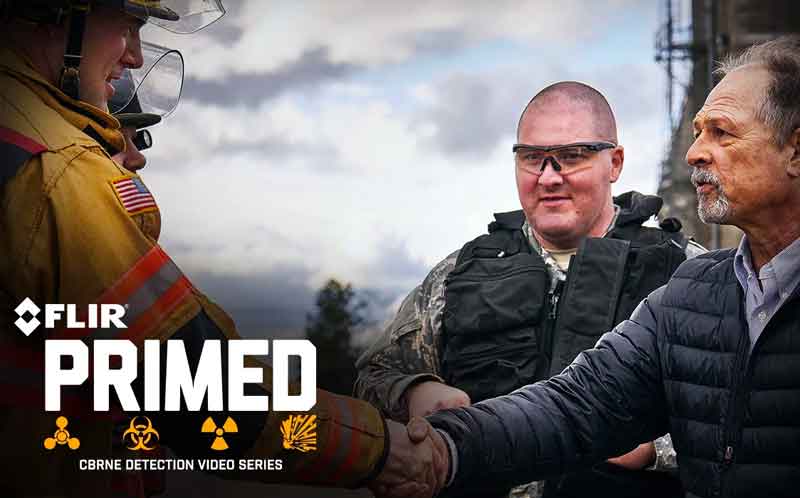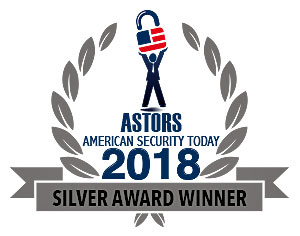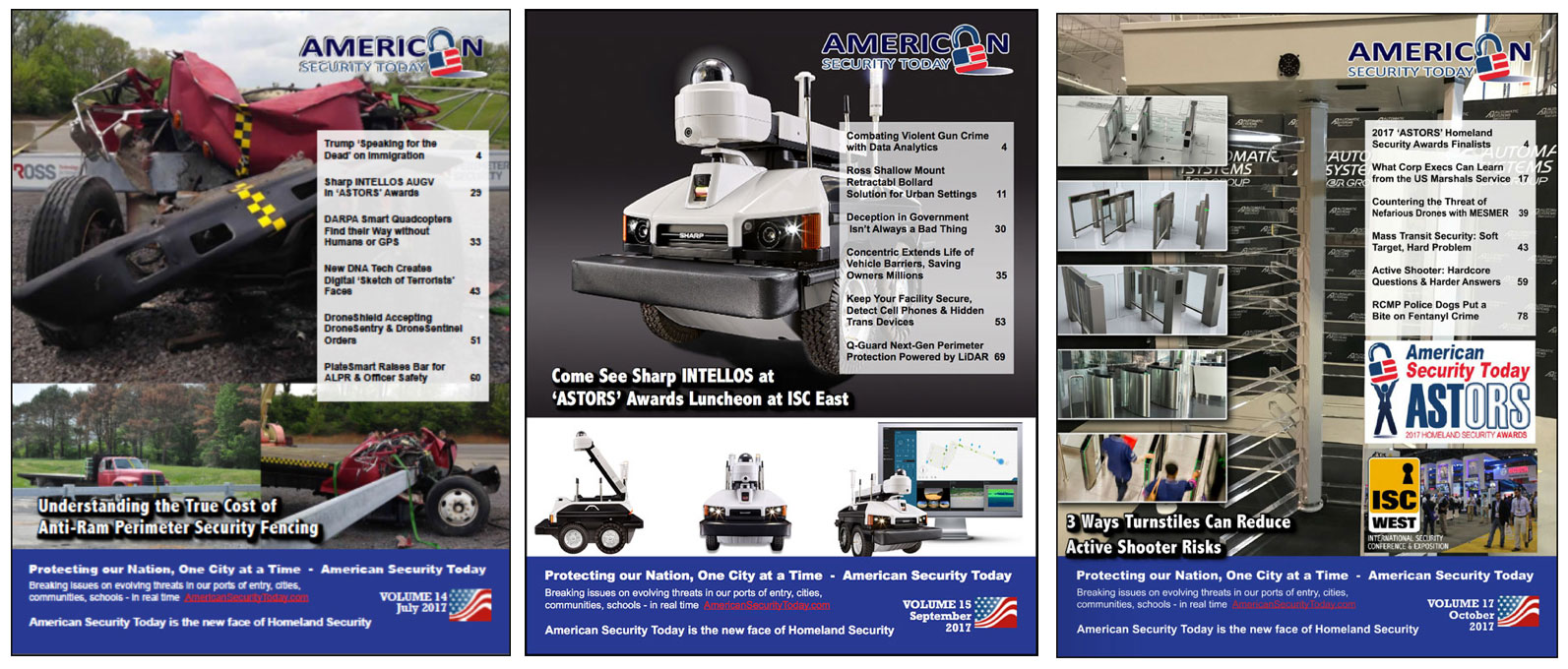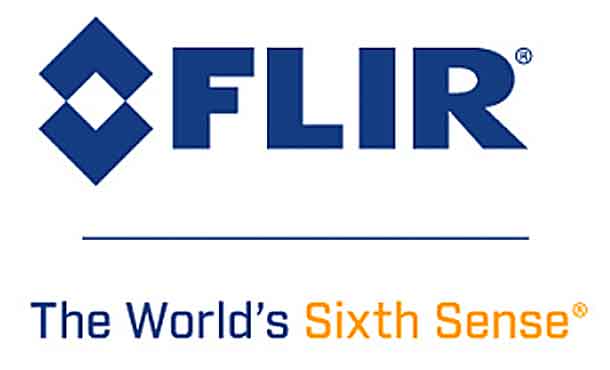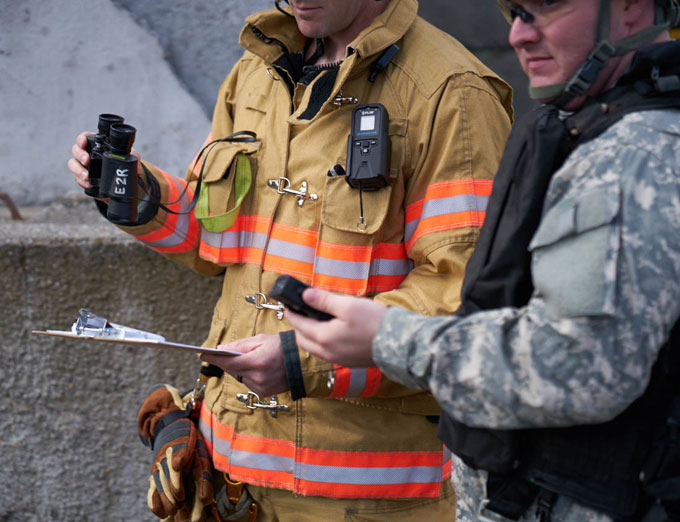
Guest Editorial by Grant Coffey, FLIR Systems Brand Ambassador and CBRNE Industry Consultant, for American Security Today
For those in the CBRNE or Hazmat space as an industry specialist, responder, or military officer, the importance of situational awareness is paramount.
Defined as “perception of environmental elements and events with respect to time or space, the comprehension of their meaning, and the projection of their future status,” situational awareness is a critical foundational skill for good decision-making, especially when faced with dangerous, time-sensitive situations, particularly for a potentially life-or-death CBRNE response equation.
Today, there are many factors affecting the CBRNE response equation, and how safely and effectively a team responds to these events.
It is prudent to not only analyze lessons learned from past events, but to enhance one’s effectiveness by anticipating and analyzing future trends.
(After 40 years in emergency response, Grant has learned that when under stress, it is common to regress back to what we know best. Sometimes, it means we repeat bad habits over and again. FLIR PRIMED is an ‘ASTORS’ Homeland Security Award Winning CBRNE Training Video Series, where very few weeks, they deliver best practices, industry insights, and real-life experiences that help you stay prepared. Each episode is accompanied by a field checklist or downloadable guide that you can use right now! In FLIR PRIMED Episode 17, Coffey shares the most common mistakes responders make on-scene and how you can avoid them. All of the episodes and tons of useful information is available at http://FLIR.com/PRIMED. Courtesy of FLIR Systems and YouTube.)
Yes, the future of CBRNE detection holds unexpected and sometimes scary surprises, but the industry must be vigilant and anticipate tomorrow’s trends to help shape actions of today.
We’ve come a long way from the time when I first entered the fire service in 1975.
The broader business of first responders is now dominated by calls for emergency medical service and other various public service related needs.
By necessity, we’re required to meet proficiency standards in many diverse skills and disciplines, and are expected to do more with less.
This reality brings with it the risk of being certified in many things, but experts in few things.
 Those with more than a few years of experience can readily identify with this sentiment.
Those with more than a few years of experience can readily identify with this sentiment.
The fire service is deep in tradition, bravery, hard work and service, and for many years the standard equipment and procedures didn’t change much.
What worked, worked. And change came very slowly.
But today’s world is much different, thanks to the increasing pace of innovation and an expanding variety of outside pressures that will effect Hazmat response and CBRNE detection, in particular.
These outside pressures run the gamut: natural disasters, terrorism, civil disturbances and the response framework for any generic threat that run low-probability, high-consequence.
To counter these pressures, it’s prudent for first responders to respect future trends when formulating medium to long-term strategic plans.
From my first-hand experience and conversations with responders across the globe, here are some potential issues that could affect the detection industry in the near future:
New Innovations in Personal Protective Equipment (PPE)
-
New innovations in PPE, specialized firefighting and hazmat equipment can cause an over reliance on technology and can dull the ability to utilize the most important tool of all – our brains.
(Watch Episode 7 then download the FLIR PRIMED “Know The Zones and What You Should Be Wearing” Guide at http://FLIR.com/PRIMED. Know the zones, KNOW where you are at, and know what you should be wearing. In FLIR PRIMED Episode 7, Grant Coffey covers the three basic hazard zone areas and four levels of PPE. Courtesy of FLIR Systems and YouTube.)
Increasing Confrontational Events
-
Greater social and political pressures can manifest into confrontational events, with potentially violent results.
-
Along with this comes an increasing possibility of a CBRNE facet to the incident.
-
For example, a Facebook mailing facility in July 2019 received a sarin-related scare that ultimately proved to be a false alarm; however, it forced first responders to react quickly and decisively after the first preliminary positive test.
-
Events of this type mandate a unified response by proactively engaging in partner agency joint training outreach well before the incident.
-
Integrate briefings, exercises and trainings at all possible opportunities and develop camaraderie, cross-discipline knowledge and trust.
(Watch Episode 16 then download the FLIR PRIMED “CBRNE Notifications” Checklist at http://FLIR.com/PRIMED. After watching FLIR PRIMED Episode 3 on the topic of radiation, one of our viewers asked us about FEMA’s RadResponder Network. As a responder, sometimes the event you roll into is too complex and you need help. In FLIR PRIMED Episode 16, Grant Coffey discusses his favorite topic; “Calling In The Cavalry” and how you can get additional support from federal, state, and local agencies. Courtesy of FLIR Systems and YouTube.)
On Demand Pressure for More with Less
-
On-demand pressure to provide more services, while responding to greater call loads, with decreasing resources and staffing.
-
This includes an increasing range of call types from mental health situations to dealing with hazardous materials.
(Watch FLIR PRIMED Episode 14 then download the free guides: “How TICs Work” and “TICS in Hazmat Applications” at http://FLIR.com/PRIMED. Thermal imaging cameras are used to see through smoke, find victims and show the hot spots at fire scenes. But did you know they can be incredibly helpful at a HAZMAT scene? Courtesy of FLIR Systems and YouTube.)
Increased Training Mandates
-
Increased training mandates with less time to accomplish them.
-
This will cause more stress upon responders, affecting their effectiveness and mental status, both on and off duty.
Cancer Dangers in First Responders
-
Cancer rates among responders are higher than among the general population.
-
This, coupled with a traditional resistance to protecting our employees with disciplined, post-fire overhaul standard operating procedures (SOP’s), will not easily stem the tide of the cancer menace.
(Fire departments across the country are ordering changes to how they operate in the field, after alarming new research shows that cancer has become the number one killer of firefighters in this country. Courtesy of NBC News and YouTube.)
Unmanned Aerial Vehicles (UAV’s)
-
The impact and innovations in the field of UAV’s.
-
They will continue to proliferate and are constantly being improved. Leveraging emerging technologies will require significant planning and training; don’t get sucked into the “buy and fly” mentality.
(The FLIR Black Hornet 3 equips the non-specialist dismounted soldier with immediate covert situational awareness (SA). Game-changing EO and IR technology bridge the gap between aerial and ground-based sensors, providing the same amount of SA as a larger UAV and IED location capabilities of UGVs. Extremely light, nearly silent, and with a flight time up to 25 minutes, the combat-proven, pocket-sized Black Hornet transmits live video and HD still images back to the operator. Courtesy of FLIR Systems and YouTube.)
To properly address this myriad list of issues, it’s important for personnel leadership to take the time to assess department needs, policies and training programs on a regular basis.
Secondly, they must actively search out the best sources for equipment that align with updated department needs and policies – ideally one with a great reputation and support.
Thirdly, they must research, train and REPEAT!
By leveraging these three core management principles, hazmat teams from the military to the fire service will be well prepared to tackle future challenges we can only just image.
By learning from the past to anticipate the future in a disciplined, programmatic fashion, we won’t need a crystal ball.
(Watch Episode 2 then download the FLIR PRIMED Hazmat Checklist at http://FLIR.com/PRIMED. In this Episode, Grant Coffey discusses why CBRNE events demand a “slow down” approach. Courtesy of FLIR Systems and YouTube.)
Hot Topics for Today’s Responders
FLIR PRIMED, which was recognized in the 2017 ‘ASTORS’ Award Program for Best Homeland Security Education Program, is a free, online CBRNE Training Video Series, that provides First Responders with best practices for HAZMAT accidents and Chemical, Biological, Radiological, Nuclear and/or Explosives (CBRNE) attacks.
In addition to best practices, FLIR PRIMED includes industry insights, and real-life experiences that help you stay prepared.
Whether the mission is preventive, reactive, or intelligence-driven, responders can stay prepared with FLIR PRIMED, a no-cost source of cutting-edge insights with a focus on “street truth”, best practices, field checklists, and other CBRNE information.
Class is now in session.
FLIR Systems Takes Silver in the 2018 ‘ASTORS’ Homeland Security Awards Program
FLIR Systems
-
Best Perimeter Protection Solution
-
FLIR Saros Dome Camera
-
FLIR was also recognized with multiple Wins in the 2017 ‘ASTORS’ Awards Program
The Annual ‘ASTORS’ Awards Program is specifically designed to honor distinguished government and vendor solutions that deliver enhanced value, benefit and intelligence to end users in a variety of government, homeland security and public safety vertical markets.

The 2018 ‘ASTORS’ Awards Program drew an overwhelming response from industry leaders with a record high number of corporate and government nominations received, as well as record breaking ‘ASTORS’ Presentation Luncheon Attendees, with top firms trying to register for the exclusive high – end luncheon and networking opportunity – right up to the event kickoff on Wednesday afternoon, at the ISC East registration!
Over 130 distinguished guests representing National, State and Local Governments, and Industry Leading Corporate Firms, gathered from across North America, Europe and the Middle East to be honored among their peers in their respective fields which included:
- The Department of Homeland Security
- The Federal Protective Service (FPS)
- Argonne National Laboratory
- The Department of Homeland Security
- The Department of Justice
- The Security Exchange Commission Office of Personnel Management
- U.S. Customs and Border Protection
- Viasat, Hanwha Techwin, Lenel, Konica Minolta Business Solutions, Verint, Canon U.S.A., BriefCam, Pivot3, Milestone Systems, Allied Universal, Ameristar Perimeter Security and More!
The Annual ‘ASTORS’ Awards is the preeminent U.S. Homeland Security Awards Program highlighting the most cutting-edge and forward-thinking security solutions coming onto the market today, to ensure our readers have the information they need to stay ahead of the competition, and keep our Nation safe – one facility, street, and city at a time.
Proud Sponsors of the 2019 ‘ASTORS’ Homeland Security Awards Program include ATI Systems, Attivo Networks, Automatic Systems, and Desktop Alert.

Time is Running Out to Receive the Recognition Your Organization Deserves!
Enter the 2019 ‘ASTORS’ Homeland Security Awards Today at https://americansecuritytoday.com/ast-awards/
Eligible “Government Excellence Award” Nominations are Complimentary, in Appreciation for Service.
Comprehensive List of Categories Include:
| Access Control/ Identification | Personal/Protective Equipment | Law Enforcement Counter Terrorism |
| Perimeter Barrier/ Deterrent System | Interagency Interdiction Operation | Cloud Computing/Storage Solution |
| Facial/IRIS Recognition | Body Worn Video Product | Cyber Security |
| Video Surveillance/VMS | Mobile Technology | Anti-Malware |
| Audio Analytics | Disaster Preparedness | ID Management |
| Thermal/Infrared Camera | Mass Notification System | Fire & Safety |
| Metal/Weapon Detection | Rescue Operations | Critical Infrastructure |
| License Plate Recognition | Detection Products | And Many Others! |
Don’t see a Direct Hit for your Product, Agency or Organization?
Submit your category recommendation for consideration to Michael Madsen, AST Publisher at: mmadsen@americansecuritytoday.com.
2018 Champions Edition
 See the 2018 ‘ASTORS’ Champions Edition – ‘Best Products of 2018 ‘ Year in Review’ for in-depth coverage of the outstanding products and services of firms receiving American Security Today’s 2018‘ASTORS’ Homeland Security Awards.’
See the 2018 ‘ASTORS’ Champions Edition – ‘Best Products of 2018 ‘ Year in Review’ for in-depth coverage of the outstanding products and services of firms receiving American Security Today’s 2018‘ASTORS’ Homeland Security Awards.’
Enter Today to Maximize Media Coverage of your Products and Services, and Get the Recognition Your Organization Deserves!
And be sure to Register Early for the 2019 ‘ASTORS’ Awards Presentation Luncheon at ISC East 2019 to ensure your place at this limited- space event!
